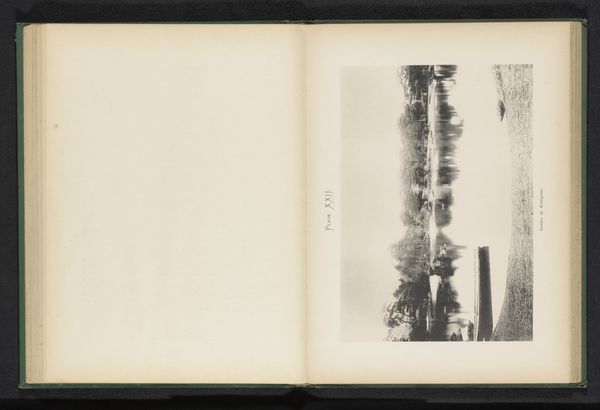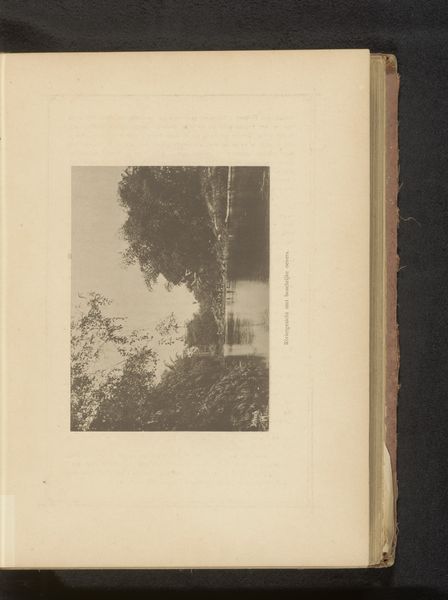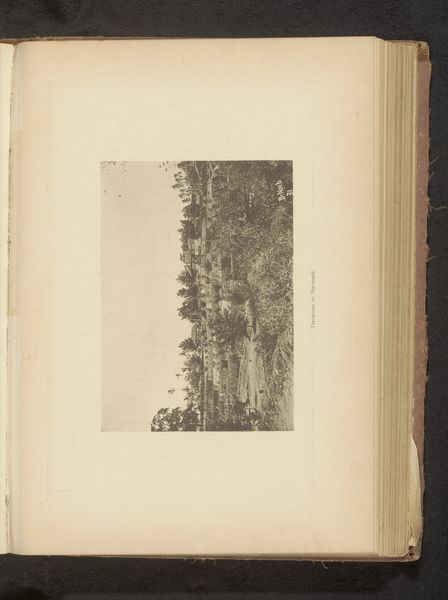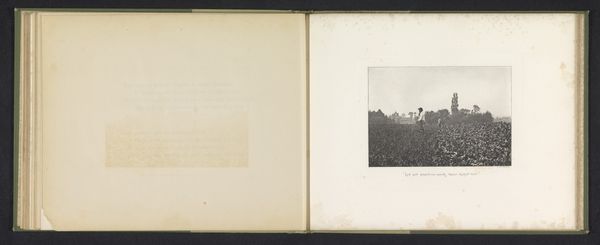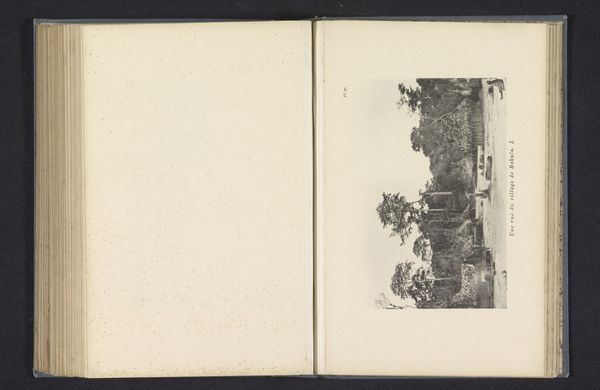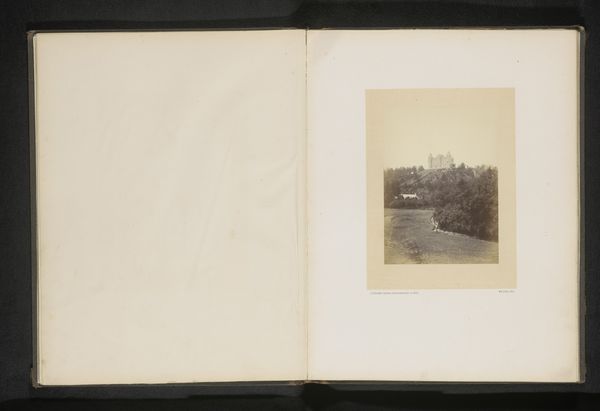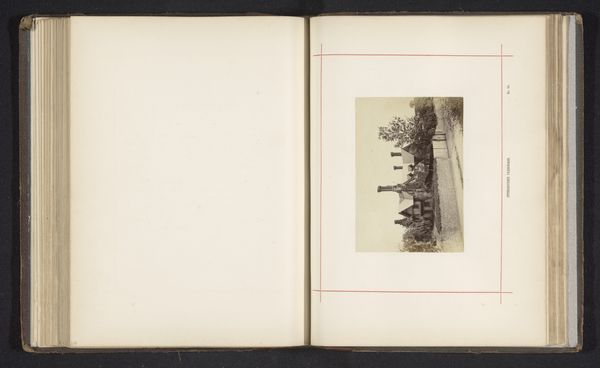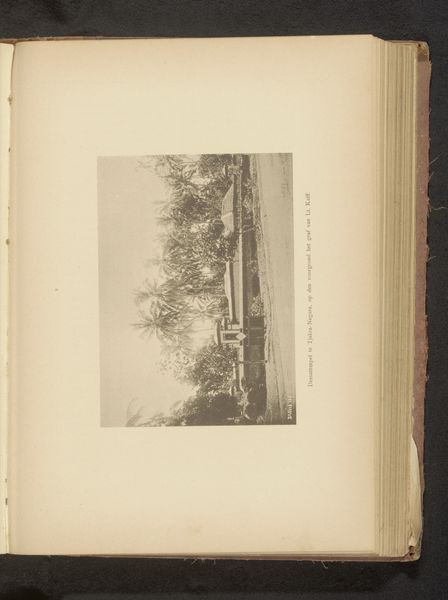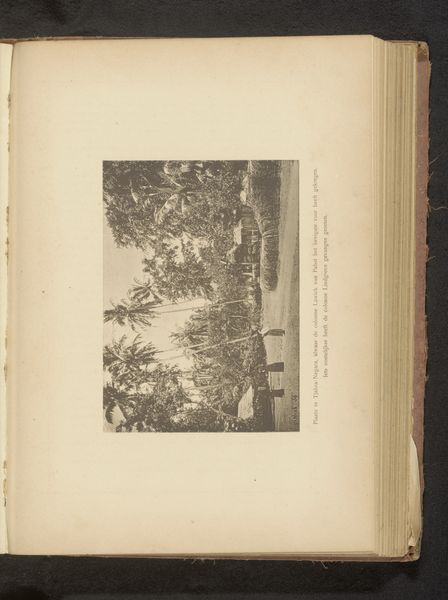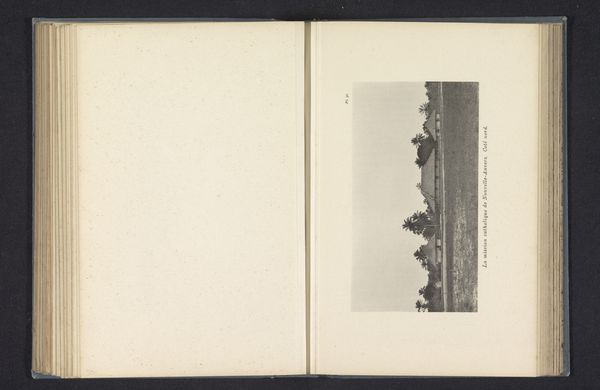
Dimensions: height 112 mm, width 155 mm
Copyright: Rijks Museum: Open Domain
Curator: Here we have an intriguing print, likely a photographic reproduction from before 1898, titled "Drie jongens zoeken naar maden in het gras," or "Three boys looking for maggots in the grass." It's attributed to D. van den Hove. Editor: It strikes me as starkly pastoral, almost severe in its composition. The monochromatic palette and the strong horizontal lines of the landscape—water, bank, distant fields—create a very contained visual space for the activity of these boys. Curator: It's worth considering this piece within the context of late 19th-century social reform movements. Images of working-class children were frequently circulated to evoke empathy and garner support for improving their living conditions. This image could very well participate in that dialogue, albeit with a seemingly innocent title. Editor: Yet, the technical execution fascinates me. The grain of the photograph itself and the soft focus give a sense of immediacy, but also a certain detachment. The tree, off-center, becomes a powerful visual anchor, dividing the scene. It creates a tension between foreground and background, almost mirroring the boys' close, focused activity against the wide expanse of the landscape. Curator: Precisely, and consider the circulation of prints like these. Reproduced in journals, perhaps displayed in exhibitions, they offered an opportunity for the burgeoning middle class to gaze upon, and perhaps grapple with, the realities of rural working-class life from a safe remove. Editor: I am drawn back to that tree. The light catches it in a way that feels almost staged, directing the eye upward, and out of the more grounded pursuits of the boys below. There's a careful calculation in how our gaze is managed, from dark to light, earth to sky. Curator: A reminder perhaps of the limited upward mobility available to those children and the heavy burden placed on the younger generation, reflecting wider debates about societal structures? Editor: Ultimately, I keep returning to that restrained palette and disciplined composition. It avoids overt sentimentality. Curator: True, the image doesn't sensationalize. Perhaps, its quietude is precisely what makes it a powerful commentary on its era.
Comments
No comments
Be the first to comment and join the conversation on the ultimate creative platform.
